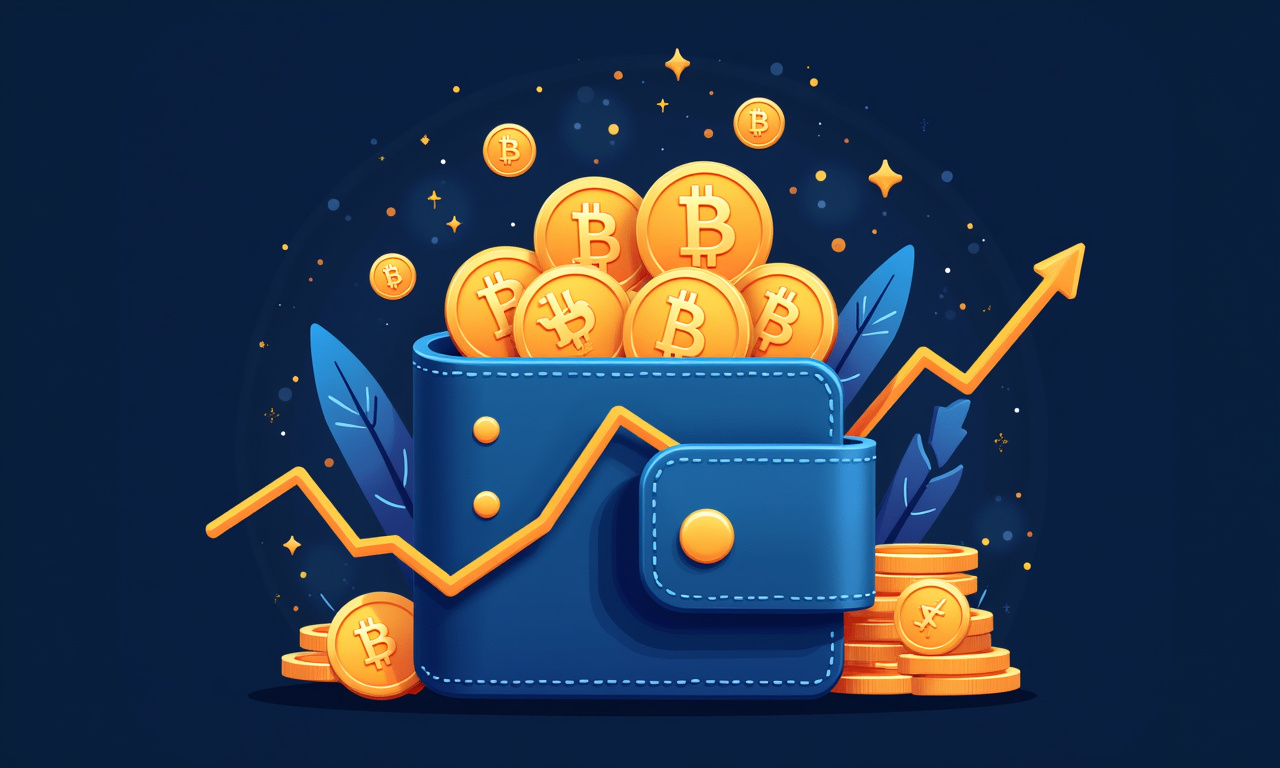USDC, or USD Coin, has emerged as one of the leading and most trusted stablecoins in the cryptocurrency economy. This makes it a secure and consistent digital version of the U.S. dollar. As a stablecoin, USDC aims to bridge the gap between traditional finance and the volatile crypto market, offering users a safe haven and a versatile tool for various transactions. Anjali Mehra, a DeFi opinion columnist known for her ability to make complex topics accessible, explores the intricacies of USDC, its origins, uses, advantages, and potential drawbacks. We hope this guide will serve as a useful introduction to USDC. It puts you in control and lets you understand how to best use and invest in it.
As of August 2023, an eye-popping $28 billion of USDC circulates in the crypto market. That underscores both the widespread adoption and utility of the platform. The total value of on-chain transactions recorded with USDC has surpassed $12.02 trillion. It underpins USDC’s vital importance in powering the majority of all economic activity on the crypto ecosystem. USDC’s average daily trading volume is $2 billion with a total supply of 34 billion currently. This large sum serves to keep it competitive and consistently ranked among the top stablecoins in the market.
Increasing Adoption of USDC in Global Transactions
USDC has received phenomenal adoption in international transactions as a result of these unique characteristics and advantages. Unlike cash or other currencies, USDC is extremely divisible – you can transact with 0.000001 USDC. Getting this kind of granularity with real, physical U.S. dollars is impossible. This problem is especially acute in developing countries or regions experiencing a lack of political stability that restrict access to USD.
Factors Contributing to USDC's Popularity
USDC promises to be a more efficient and cost-effective alternative to traditional cross-border payment systems. Traditional cross-border payments require many intermediaries, leading to exorbitant costs and lengthy processing times. Additionally, USDC makes it possible for direct peer-to-peer transfers between parties. This removes unnecessary intermediaries and reduces transaction cost burdens.
- Stability: Pegged to the U.S. dollar, USDC offers a stable store of value, mitigating the volatility associated with other cryptocurrencies.
- Accessibility: USDC can be easily purchased through platforms like MoonPay, using various payment methods such as credit cards, bank transfers, Apple Pay, and Google Pay. MoonPay Balance offers a seamless way to acquire USDC using fiat currency, and users can enjoy zero-fee withdrawals to their bank accounts when cashing out.
- Transparency: Circle, the company behind USDC, maintains a 1:1 reserve ratio, ensuring that each USDC is backed by an equivalent amount of U.S. dollar assets. This transparency is crucial for maintaining trust and confidence in the stablecoin.
- Efficiency: USDC facilitates faster and cheaper transactions compared to traditional banking systems, making it ideal for cross-border payments and remittances.
- Programmability: As a digital asset, USDC can be easily integrated into decentralized applications (dApps) and smart contracts, opening up a wide range of use cases in decentralized finance (DeFi).
Impact on Cross-Border Payment Systems
USDC is enabling our immigrant community members to send money home to their families and friends all around the world. What it does is make remittances faster, borderless, and secure. Working migrant workers stand to gain enormously from this. Traditional channels charge steep commissions and set up lengthy processing times to send money home. By taking advantage of USDC, they’re able to stretch their budgets further and guarantee that their money gets where it’s supposed to go and faster.
USDC has gained a large market share among the many stablecoins that have entered the market. Yet, it remains far behind Tether (USDT) in terms of market cap and trading volume. Tether—by far the most active stablecoin for a long time—has been able to have deep liquidity and acceptance throughout all exchanges and networks. Tether’s dominance has been called into question with worries over transparency as well as Tether’s lack of clarity concerning the composition of its reserves.
Tether's Dominance in the Stablecoin Market
Over the past few years, stablecoins have exploded in popularity. It was the overall increase in crypto adoption and the demand for a more stable, trusted digital asset that really drove this rise. Stablecoins continue to operate an important function in the crypto ecosystem. They allow users to seamlessly transition between fiat currencies and cryptos, at the touch of a button. When there are extreme market conditions or high market volatility, they act as a refuge for traders. This helps them maintain their liquidity while continuing to participate in the crypto community.
Current Market Trends and Demand for Stablecoins
Finally, these market dynamics are resulting in a clear preference for stablecoins that provide higher levels of transparency and regulatory compliance. USDC, with its commitment to maintaining a 1:1 reserve ratio and undergoing regular audits, has positioned itself as a more trustworthy and reliable alternative to Tether. Regulatory scrutiny of stablecoins is becoming even more stringent. USDC’s resolve to adhere to best practices would help it become the more advantageous alternative over time.
The outlook for Tether and its rivals going forward, like much in the ever-evolving stablecoin space, remains murky, as the market grows and matures. Over time, Tether’s market share is likely to continue to erode as users find more transparent and compliant stablecoins such as USDC for their needs. Tether’s first-mover advantage is intense. Coupled with its strong network effects, this will assure that it remains one of the two or three top stablecoins for the foreseeable future.
Future Outlook for Tether and Competitors
USDC continues to have a great chance to take more of the market share. By prioritizing transparency, regulatory compliance, and fostering user trust, it has the potential to thrive. USDC can draw in more institutional investors and mainstream users if it earns the best reputation as a safe and sound, well-governed stablecoin. This will accelerate its adoption and boost liquidity. Binance USD (BUSD) and Dai (DAI) are other stablecoins with enough market power to affect the future direction of the stablecoin market. They all possess distinct advantages that make one highly more attractive to certain subsets of users.
The whole idea behind fiat-backed stablecoins is based on the assumption of a 1-to-1 fiat asset backing to stablecoins. All USDC issuers are committed to transparency. They make sure each USDC in circulation is fully backed by one-to-one U.S. dollar assets in reserve. As a registered money service business in the U.S., Circle’s holdings are regularly audited by international accounting behemoth Grant Thornton. This third-party verification adds an extra layer of assurance to users of USDC that it is legitimately backed 1-to-1 by real-world assets. Circle’s monthly attestations on its reserves allow regular, transparent disclosures on how geared up New Jersey’s holdings are and the worth of its asset portfolio.
Purportal USDC’s focus on transparency and regulatory compliance has propelled it to a significant position as a stabilizing force to the market. Its 1:1 reserve ratio has allowed it to maintain a reliable peg to the U.S. dollar, even during periods of extreme market volatility. This has done wonders to boost the perception of USDC as a safe and sound stablecoin. One widely-discussed way to achieve this stability is for an issuer of stablecoins to back each coin with a fixed reserve of assets. Circle fully backs its coin with one-for-one cash reserves. For Tether, this strategy is how the coin remains consistently pegged to the U.S. Dollar.
USDC's commitment to transparency and regulatory compliance has made it a major force in providing stability to the market. Its 1:1 reserve ratio has allowed it to maintain a reliable peg to the U.S. dollar, even during periods of extreme market volatility. This has helped to build a strong reputation for USDC as a safe and trustworthy stablecoin. One common method for maintaining stability is for a stablecoin issuer to hold a reserve of assets. The one-for-one cash holdings that Circle uses to back their coin have allowed it to maintain a reliable peg to the U.S. Dollar.




